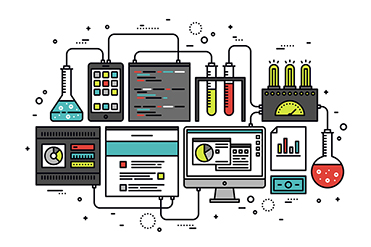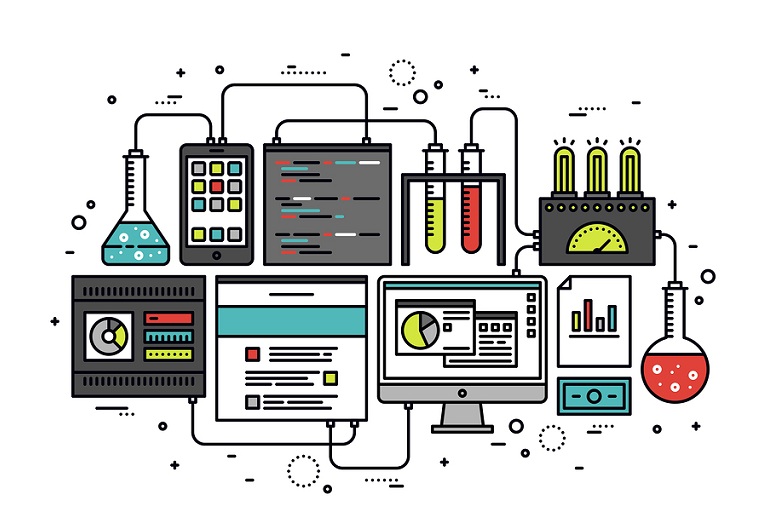

Technology is evolving so quickly that businesses need to know how to stay relevant with customers and competitors in their industries. With so many businesses going digital these days, it’s natural to want the most functional and attractive web design possible. Modern companies are pouring countless resources into finding the best ways to connect with customers and impact their markets. Although many of the techniques involve user data, intensive research, predictive modeling, and various analytical metrics, one big area of potential is rooted in basic human nature.
The next big step in improving your website’s design begins with a better understanding of brain science. Understanding how the brain works and organizes information will take your web design further. Keep the following concepts in mind when constructing your website and organizing your content.
Logical Progression in Content
Determinism plays a big role in human brain science. As a species, we naturally look for the logical progression of things – beginning, middle, and then end. The human brain naturally sparks attention at the introduction of something new, but once the brain has adjusted to this new element, attention dwindles. However, once the new element is about to disappear (or otherwise end), attention perks back up in anticipation of the end state. We call this progression the “serial position effect.”
Readers’ attention is going to drop in the middle of a series of content. Their brain has jumped at the introduction of a new element, and complacency sets in after a while. Attention naturally picks back up once the end is in sight. Use the serial position effect when arranging content on your pages: Put the most important things at the beginning and end of your pages. That is where users’ eyes are going to linger longest and where you can make the biggest impact on their experience with your brand.
Understand Loss Aversion
Human beings have a natural tendency to miscalculate losses and gains. The human brain tries to minimize pain and maximize pleasure, but as a species, human beings aren’t very good at immediate, accurate cost/benefit analyses. Typically, most people don’t assign the appropriate values to losses and gains – they tend to overestimate the value of a loss and underestimate the value of a gain. Therefore, losses are far more painful than they should be, and gains aren’t as positively impactful as they should be, a concept known as “loss aversion.”
Understanding how loss aversion affects the human brain is crucial when developing content for your site. For instance, users are far more likely to pay attention to the cost of not using your brand over the cost of using it. With this concept in mind, craft your content in such a way that you highlight gains immediately and bundle costs together, so that you minimize the “negative” aspect of using your products or services.
Additionally, people will take advantage of an opportunity to save money on a purchase they may be only somewhat interested in making. For example, a customer may be 75% sure about making a purchase, but he or she isn’t totally convinced. An element of urgency, such as a “limited time offer” or “low quantities available,” may be the determining factor in getting that customer to bite and finish the sale.
Humans are Social Animals

Although human beings are the most evolved animals on the planet, some animal instincts still influence us – herd mentality being one of these instincts. People tend to pay attention to what other people are doing, especially in large groups. This is important for web design in several ways, and you should consider using several design elements and features to capitalize on this part of human nature:
- Product reviews and testimonials. Most modern shoppers want to read reviews on a product before buying it. Today’s shoppers are more tech-savvy and socially conscious than any other previous generation, and most turn to the internet to investigate a purchase before committing to it. Reviews of your products and testimonials about the quality of your services are invaluable, so make sure you provide your customers with the opportunity to leave feedback. Their reviews may entice others to commit to purchases, especially if they address specific concerns one might have about a particular aspect of a product or service.
- Social media marketing. Social media is a part of everyday life for most people and has become a fantastic method for keeping in touch with the people in our lives with a convenient format. Businesses have moved into social media in an effort to make more-personal connections with their customers. Your social media platforms should be accessible from your website. Many companies have adopted sidebars or widgets that allow visitors to quickly Share, Like, Tweet, or Pin content to their social media accounts directly from the site. Offer visitors to your site the chance to connect to your social media presence.
- Social media trackers. In the same vein as offering social media interactivity, having a tracker that shows real-time stats for your brand’s social media efforts can have a tremendous impact on visitors to your website. For example, create a tracker that shows how many times a piece of your site’s content is Shared, Liked, Retweeted, or Pinned. If a visitor sees your content is getting thousands of hits, they are far more likely to investigate further. Popularity is generally an indicator of value, so most people will automatically assume that if a brand is getting lots of hits from other customers, it is trustworthy and valuable.
- Endorsements and brand appearances. If any popular media has featured your brand, or if you have received any endorsements from prominent figures or organizations, make it a point to display this information on your site. Users are going to see these endorsements and associate it with value.
- Awards and certifications. Similar to endorsements, if your brand has received any official recognition, earned any certifications (such as a Better Business Bureau rating), visitors on your site are also going to associate these accomplishments with value.
Capitalize on Cognitive Fluency

Overall, using brain science in web design hinges on your ability to leverage human nature as a communications tool. One more concept that will be tremendously helpful to exploit is cognitive fluency, or the human brain’s tendency to prefer simplicity. Some characteristics of websites have become so commonplace that users naturally expect to see those things, such as sidebars and login sections. If you deviate too far from established norms and expectations, you run the risk of users dismissing you. Your content does not fit the subconscious framework of what is acceptable or valuable, and the user dismisses it – knowingly or not.
This does not mean you should simply mimic what everyone else is doing; you need to set your brand apart as something memorable. However, this does not mean completely doing away with all the established website design conventions. When you follow the basic guideline of customer expectations, you’re naturally encouraging cognitive fluency and building trust with the viewer. Keeping things simple, neat, and organized is a great way to draw attention and generate interest without seeming boring. However, the deciding factor in this will be the value and relevancy of your content.
Ultimately, you should focus your aesthetic appeal on easy processing: The human brain is going to prefer something easy to analyze over something complicated, and this applies to every element of your site, from visual elements to text to images. You also need to consider evolving social consciousness: People are more cautious online and wary of marketing. No one responds well to the hard sell anymore. Instead of using high-pressure, garish, or overly complex design, offer visitors to your site an easily digestible and valuable experience. Don’t make them wade through complicated designs to reach their goal, and leverage human nature to your advantage when designing for the web.
The post The Science of Great Web Design first appeared on Web Design & Digital Marketing Tips.